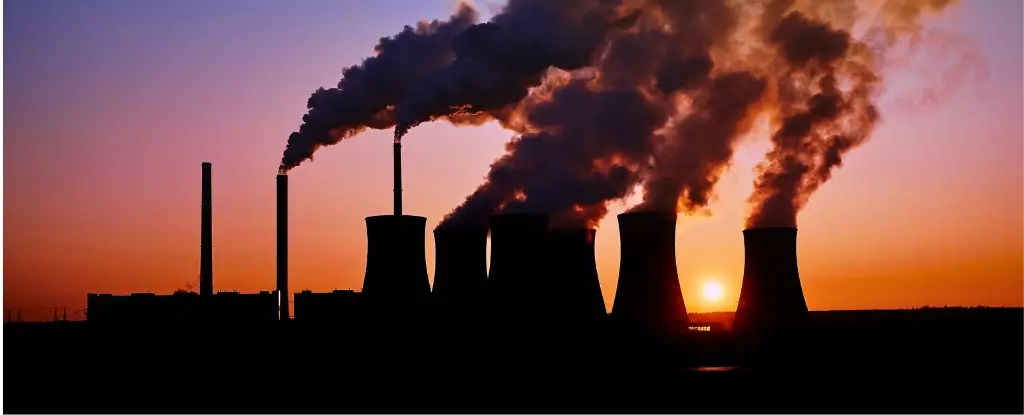In recent years, the specter of climate change has loomed larger than ever, capturing headlines and sparking urgent discussions on global policy. The Paris Agreement of 2015 stands at the forefront of these efforts, setting an ambitious target of limiting global warming to 1.5°C above pre-industrial levels. However, recent analyses reveal that Earth is in a precarious position, with temperatures reaching alarming heights that may signify a catastrophic turning point. The complex interplay between human activity and natural climate patterns—highlighted by the latest studies—paints a grim picture of our current trajectory and the challenges that lie ahead.
As of 2024, data indicates that global average temperatures have surpassed the 1.5°C limit, a threshold that, while not formally declared under the Paris Agreement’s long-term measurement approach, raises critical concerns. The subsequent increase in temperatures poses a significant threat to ecosystems, weather patterns, and human societies. While natural phenomena such as El Niño have played a role in exacerbating temperature episodes, the overarching narrative remains one of human-induced climate change. The depth of this crisis is particularly troubling as we appear to have stepped into a decidedly dangerous climate phase.
Notably, two independent studies conducted by European and Canadian researchers examined whether the global temperature spikes signal a permanent shift towards exceeding the 1.5°C threshold. Both studies approached the question through different lenses—one focusing on historical warming trends while the other analyzed monthly temperature records. Such duality in research underscores the complexity of climate science and the critical need for diverse methodologies in understanding our planetary health.
The European study’s findings suggest that any year where average temperatures hit or exceed the 1.5°C mark could herald a sustained warming trend over the subsequent two decades. This interpretation is particularly alarming, as it implies we may have crossed into a new climate chapter where these thresholds can be expected to occur routinely. Complementarily, the Canadian analysis examined month-to-month data and underscored the significance of prolonged periods above this temperature limit. The simultaneous agreement between these studies raises urgent questions regarding the reality of our climate situation and necessitates prompt and decisive action.
Despite being armed with years of research and warnings from climate scientists, humanity’s response has consistently fallen short. Statistics reveal that global carbon dioxide emissions have risen drastically since the publication of the inaugural report by the Intergovernmental Panel on Climate Change (IPCC) in 1990. The figures are alarming—a nearly 50% increase in annual emissions reflects a severe disconnect between scientific guidance and policy implementation. Such an escalation is detrimental, as the science establishes that achieving net-zero emissions is crucial to halt global warming, but the reality is that emissions continue to surge.
In the context of the already exceeded threshold, a concept gaining traction is that of “net-negative emissions,” wherein humanity would need to actively remove greenhouse gases from the atmosphere. This ambitious target inspires both anxiety and hope but emphasizes the challenging path ahead. To mitigate the disastrous consequences of climate change, we must not merely reduce our emissions but also reverse some of the damage already incurred.
Communities around the globe are already experiencing the deleterious effects of climate change, with developing countries often bearing the brunt of its consequences. Australia, for example, has already recorded an average temperature increase of 1.5°C since the early 20th century, resulting in a cascade of environmental challenges. Rising seas and elevated ocean temperatures jeopardize coastal ecosystems and human habitats. Additionally, extreme weather events—including bushfires, heatwaves, and flooding—are not only increasing in frequency but also in intensity, thereby straining the natural and economic endurance of various regions.
Amid the looming existential threats, there are promising signs of progress in renewable energy adoption and the decline of fossil fuel use across many nations. Technological innovations in key industries, such as aviation and construction, offer pathways to reduce emissions significantly. However, these advancements alone are insufficient to meet the gravity of the climate crisis. A profound shift towards decarbonization across all sectors is necessary to ensure a sustainable and habitable planet for future generations.
The recent findings serve as a wake-up call for the global community. Adapting to the realities of climate change and fostering collaboration between wealthier and less affluent nations is essential for addressing vulnerabilities to climate impacts. While some progress has been made, generating significant financial and technical support to developing countries facing the most severe repercussions is critical for equity and sustainability.
While cautious optimism abounds due to advancements in green technologies and policy initiatives, we cannot afford to relax our efforts. The alarm bells have sounded, and humanity stands at a precipice. Bold, immediate action is crucial—not only to combat the existing damage but also to pave the way for a resilient future capable of thriving within the limitations imposed by a changing climate. The choice is ours; either we act decisively, or we risk drawing others into a future of uncertainty and peril.



Leave a Reply